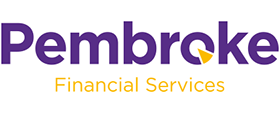April is the one month in the year it pays to check your payslip with new tax and auto-enrolment rates coming into effect.
Your April pay may look much the same as March’s, but it is worth giving your pay slip a close look. If you are an employee, your April pay slip is always worth checking, even if you pay little attention to the other eleven you receive over a year.
The items to check include:
- Your Salary: Many employers change pay rates from 1 April, often coinciding with the start of their new financial year. If you were notified of a pay increase in March, it is worth making sure the number on the April pay check agrees with what you were promised.
- Your Tax code: Your April pay check will be the first for the 2019/20 tax year and your PAYE tax code will have almost certainly changed from what was on your March pay slip. If you are entitled to a full personal allowance and have no deductions, your code number should increase by 65, reflecting the £650 increase in the personal allowance.
If you have a company car, then it is likely to move your code in the opposite direction. For most cars (other than those with the highest emissions), the percentage of list price that is taxable rises by 3% – £300 per £10,000 of list price. A £22,000 car will therefore more than counter the rise in the personal allowance. The higher scale percentage also means a similar increase in taxable value of employer supplied fuel. In practice you might be better off paying your own fuel bills, even if your employer pays you nothing in compensation.
- Your National insurance contributions (NICs): The primary threshold (that is, the starting point) for NICs rises by £4 a week while the upper earnings limit (the top level of earnings on which you pay full 12% NICs) jumps by £70 a week. As a result, if your annual earnings are more than £46,600 a year, you will be paying more NICs from April. If you earn over £50,000 a year, your extra NICs will be just over £28 a month.
- Your Pension contributions: These are generally linked to salary, although not necessarily your full pay, so should increase if you have an April pay increase. If you are in an automatic enrolment pension scheme, your contributions are usually based on “band earnings”, which were £6,032–£46,350 in 2018/19 and are £6,136–£50,000 in 2019/20. The contribution rate will rise, too. How much will depend upon your employer’s contributions: you might see the rate increase by two thirds to 5% of band earnings (4% after basic rate tax relief). If your pay in April is lower than in March, the auto enrolment change could be the culprit.
These changes are, in the main, subtle but each one could have ramifications on your financial plans. For more insight on the tax, NICs and pension deductions from your pay and options to limit their impact, please contact us.
Please Note: The value of tax reliefs depends on your individual circumstances. Tax laws can change. The Financial Conduct Authority does not regulate tax advice.
















